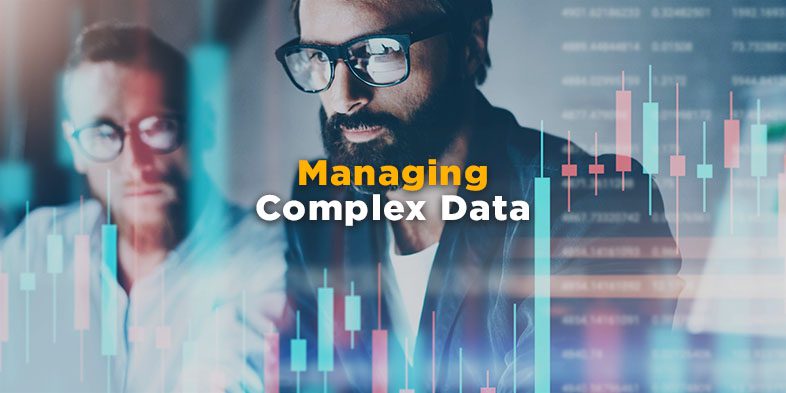Managing Complex Data Assets to Improve Business Outcomes


Infragistics’ Casey Ciniello offers insights on managing complex data assets to improve business outcomes. This article originally appeared on Solutions Review’s Insight Jam, an enterprise IT community enabling the human conversation on AI.
Today, businesses are inundated with data from multiple sources, leading to significant challenges in data management and utilization. The stakes are high: failure to effectively consolidate and interpret this data can result in missed opportunities and diminished operational efficiency.
This article delves into practical strategies and best practices that empower organizations to overcome these hurdles. By transforming overwhelming data sets into clear, actionable insights, you can equip teams with the knowledge needed to drive better business outcomes. Read on to discover how to turn your data management challenges into a competitive advantage.
Consolidate Data from Diverse Sources
Consolidating data from diverse sources is foundational to effective data management. In practice, this means integrating fragmented datasets from various SaaS platforms, systems of record, and other software tools into a unified repository. Why is this essential? First, it dismantles data silos that often hinder comprehensive analysis and decision-making processes. By centralizing data, you ensure that every team member has access to the same information, thereby improving collaboration and strategic alignment.
Furthermore, a unified data environment enhances the accuracy and depth of your analytics. It allows for more complex data models and analytics that can identify trends and patterns not visible in isolated datasets. This integration also streamlines workflows, as data becomes easier to access, interpret, and act upon.
Most importantly, with all data in one place, businesses can leverage advanced analytical tools and techniques, such as predictive analytics and machine learning, to forecast trends and make proactive business decisions. This not only leads to improved operational efficiency but also equips companies to anticipate market changes and customer needs more effectively, ensuring a competitive edge.
Efficient Data Organization and Labeling
Before diving into the mechanics of data analysis, it’s crucial to establish a framework for organizing and labeling your data. But what does effective data labeling entail, and why is it so important?
Data labeling involves assigning clear, standardized tags, categories, and definitions to various data elements, making them easily identifiable and accessible. This process is like organizing a vast library into well-marked sections where every book is where you expect it to be. Just as a well-organized library allows patrons to find any book quickly, properly labeled data simplifies the search and retrieval process for your team, enabling them to find datasets on demand.
There are many advantages of this systematic organization. First, it significantly reduces the time and effort spent on data retrieval, allowing your users to focus more on interpretation rather than data hunting. Second, standardized data labeling ensures consistency across the organization, which is critical when different departments rely on the same datasets to make informed decisions.
Additionally, well-organized data supports more accurate and deeper data analysis. With everything categorized correctly, it’s easier to apply advanced analytical techniques and tools, enhancing your ability to draw meaningful insights that can lead to innovative solutions and competitive advantages.
Investing in efficient data organization and labeling is not just about keeping your data neat; it’s about transforming data into a strategic asset that drives smarter decisions and superior business outcomes.
Leveraging Conversational Analytics for Real-Time Insights
Conversational analytics is transforming data analysis across industries. At its core, conversational analytics allows users to query data using natural language processing (NLP). This means you can ask questions of your data as you would converse with a human, such as “What were our total sales last quarter?’ or “Show me the trend in customer churn rate this year.” By interpreting and processing these inquiries, conversational analytics tools provide answers and insights in real-time, making data analysis not only faster but also more user-friendly.
This technology is particularly valuable in democratizing data access within organizations. It breaks down the barriers that traditionally kept valuable insights locked away with data scientists and specialized analysts. Now, anyone in the organization, regardless of their technical expertise, can engage with data directly and make informed decisions quickly. This accessibility is crucial in business environments where speed and agility are essential.
Moreover, conversational analytics enhances decision-making by providing instant insights. For example, during a strategic meeting, instead of tabling a decision pending further analysis, team members can immediately pull up relevant data through simple queries. This capability ensures that decisions are both data-driven and timely.
By integrating conversational analytics into your data strategy, you not only streamline access to information but also foster a culture where data-driven decision-making becomes the norm, not the exception.
Conclusion
As we’ve explored throughout this article, effectively managing complex data sets is essential for enhancing business outcomes. This process is not overly complicated, but it does demand a strategic approach and the utilization of tools for data integration, organization, and analysis.
Choosing the right data analytics tool is pivotal. Such a tool should not only offer real-time insights for agile decision-making but also integrate advanced technologies like AI and conversational analytics. These capabilities are critical for staying competitive and driving superior business results.
However, technology alone is not enough. Equipping your team with the necessary skills to leverage these tools is just as important. Consider investing in training and continuous learning programs to enhance your team’s data literacy. Additionally, implementing a data catalog can greatly improve data accessibility and foster collaboration across departments, ensuring that all team members have the insights they need at their fingertips.
To begin transforming your data management practices, start by assessing your current tools and processes. Identify gaps in your data strategy and consider how the integration of advanced tools and training programs might address these deficiencies. By taking these steps, you’ll be well on your way to realizing the full potential of your data assets and securing a competitive edge.





























